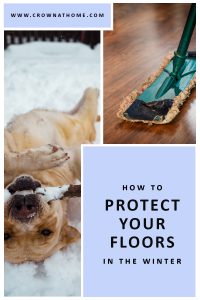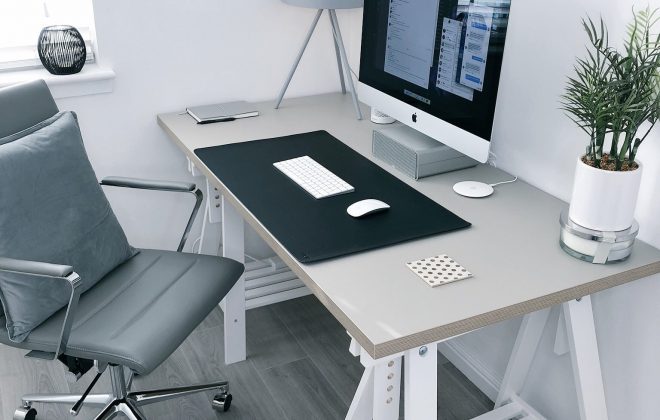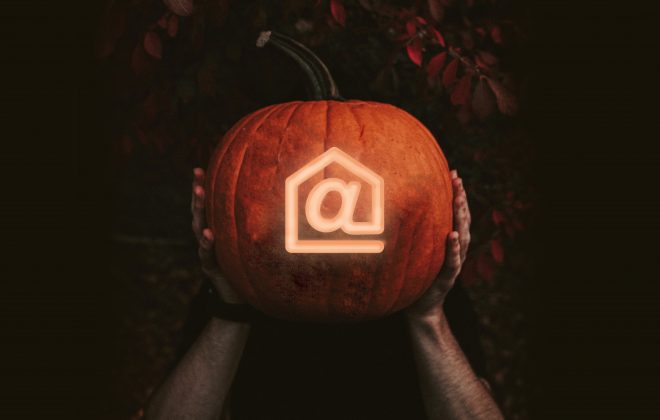How to Protect Your Floors in the Winter
Winter can be hard on your floors. If you live in a cold seasonal climate, you know that keeping your floors clean in the winter can be a big job. Here are some of the main culprits of winter damage to floors and ways that you can protect your floors this season.
Salt
While Ice melt keeps people safe when the temperatures drop, it has a tendency of making its way inside onto your floors. The debris can wreak havoc on your floors and cause wear by scratching up your carpet or wood. Residue that’s left too long can cause white marks, stain, and reduce the life of your flooring.
It’s extra important to stay on top of sweeping and vacuuming your floors in the winter. This will help keep the salt off your floors and minimize any damage. Make sure that the wheels on your vacuum don’t scratch. Use a cleaning product that is recommended by your flooring manufacturer to guarantee the longevity of your floors. Many flooring manufacturers suggest being careful when using a Swiffer or similar duster as they can trap small rocks and salt that you can drag across your floor and cause scratches.
Spot clean any areas you may see salt come into your home right away to minimize damage to your floors. Once spring comes around, it’s a good idea to get any carpets you may have professionally cleaned. This will ensure that there is no leftover residue from the winter months wearing away at your floor.
Make sure that you don’t neglect your pet’s paws when they come in the door either. Keep a cloth at the door to clean their paws when they come in. This will protect their paws and your floors from the salt and debris tracked inside.
Ice and Snow
Tracking water into your home this winter may seem simple to avoid, but with people coming in and out throughout the day puddles can start accumulating in your entryway. These wet spots can be absorbed into certain kinds of flooring and cause severe damage.
Talk to a professional about waterproof flooring options, particularly for your entryway and other high-traffic areas. There are several types of LVT, tile, and sealant options for hardwood that are long-lasting solutions for water in your home. Add rugs to high-traffic areas in your home to reduce the amount of moisture tracked onto your floors.
Another solution is to have a high-absorbency mat to wipe feet as soon as they come in the door. Place two mats at each entrance of your house, one outside and one right inside the door. This will act as the first line of defense to keep salt, sand, and mud out of your home. Encourage everyone to take their shoes off upon entering the home and designate a space for people to leave them. A boot tray or a shoe rack can be a great option to keep any leftover debris on people’s shoes off your floor. You can keep house-shoes, slippers, or cozy socks nearby for your household to slip on after removing their outside shoes.
Freezing Temperatures
Cold weather can lead to us cranking the heat all the way up in the winter. Having that furnace running all day and all night can cause dry air in your home. We all know how winter causes humidity to go down, and our cracked and dry skin is a testament to that. Turning the furnace all the way only compounds dryness in your home. That can also take a toll on your floors, particularly if you have hardwood. It can cause the wood to get brittle.
It’s nice to keep a warm house in the winter, and you should use your furnace, but try to allow your furnace to turn off for a while on days that may feel a bit warmer. A few humidifiers throughout the house can help to bring some moisture back in. which will keep your hardwood floors safe from drying out and cracking. It’s also a good choice to apply a sealant to your hardwood floors before the weather gets too icy. This will protect your floors and make them easier to clean.

Categories
Recent Posts
Recent Posts
Categories
- All (1)
- Design (8)
- Giveaways (1)
- Kitchen and Bath (1)
- Pre-Sale Renovations (1)
- Press Release (1)
- Tips & tricks (2)
- Uncategorized (2)




